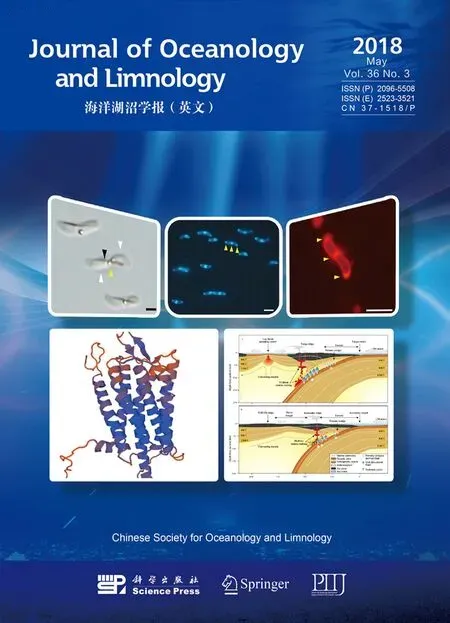Wave-current interaction during Typhoon Nuri (2008) and Hagupit (2008): an application of the coupled ocean-wave modeling system in the northern South China Sea*
2018-07-11ZHANGChen张晨HOUYijun侯一筠LIJian李健
ZHANG Chen (张晨) HOU Yijun (侯一筠) LI Jian (李健)
1Institute of Oceanology,Chinese Academy of Sciences,Qingdao 266071,China
2Key Laboratory of Ocean Circulation and Waves,Institute of Oceanology,Chinese Academy of Sciences,Qingdao 266071,China
3University of Chinese Academy of Sciences,Beijing 100049,China
4North China Sea Branch of State Oceanic Administration,Qingdao 266071,China
5Qingdao National Laboratory for Marine Science and Technology,Qingdao 266237,China
AbstractThe northern South China Sea (SCS) is frequently affected by typhoons. During severe storm events, wave-current interactions produce storm surges causing enormous damage in the path of the typhoon.To evaluate the inf l uence of wave-current interactions on storm surge, we used a coupled ocean-atmospherewave-sediment transport (COAWST) modeling system with radiation-stress and vortex-force formulations to simulate two typically intense tropical storms that invaded the SCS, namely Typhoons Nuri (2008) and Hagupit (2008), and compared results with observations from the Hong Kong Observatory. Both radiationstress and vortex-force formulations significantly improved the accuracy of the simulation. Depending on which typhoon and the topography encountered, the inf l uence of surface waves on the oceanic circulation showed different characteristics, including the differences of range and intensity of storm surge between vortex-force and radiation-stress experiments. During typhoon landing, strong sea-surface elevation in concert with wave set-up/set-down caused the adjustment of the momentum balance. In the direction perpendicular to the current, but especially in the cross-shore direction, the pressure gradient and wave effects on the current dominated the momentum balance.
Keyword:northern South China Sea; wave-current interactions; storm surge; coupled ocean-atmospherewave-sediment transport (COAWST) modeling system
1 INTRODUCTION
The South China Sea (SCS) is a vast sea area with perennial sea surface temperatures above 26.5°C,which favors the local generation of typhoons (Chen,2010). Under the constant invasion from the west by typhoons originating in the Pacific through the Luzon Strait (Wang et al., 2006), local households and the economy at large are often at risk of suffering from the enormous damage resulting from storm surge along the coastal area of southern China, including the Zhujiang (Pearl) River Delta region. Since typhoon-induced waves can lead to a considerable wave set-up and current, the effects of surface gravity on the oceanic current and turbulence are considered to play an important role in forecasting tropical storm surges. The effects of waves on current contribute additional momentum and mass flux to the mean flow,and the effect of mean currents on waves, manifest as adjustments to the sea-level elevation resulting from wave set-up/-down and the frequency of the Doppler shift.
In the last two decades, a number of theories of wave-current interaction have been incorporated into two- and three-dimensional numerical models.Walstra et al. (2000) combined the generalized Lagrangian mean equations and the depth-average radiation-stress gradient (Longuet-Higgins and Stewart, 1962) into the Delft3D-f l ow model to simulate wave effects on mean currents. Mellor (2003,2005) derived the three-dimensional wave-current interaction equations in aσ-coordinate system to describe the vertical distribution of radiation stress.Based on Mellor’s work, Warner et al. (2008)developed a fully-coupled model incorporating atmospheric, oceanic and wave models. Xie et al.(2001) added a radiation-stress scheme to the Princeton Ocean Model (POM) to calculate the flow forced by hurricanes along the east coast of the United States. In Newberger and Allen (2007a, b), wave forcing as a surface stress and a body force was incorporated into a later version of POM (the nearshore POM module). By adopting the vortexforce formalism (McWilliams et al., 2004) in ROMS(Regional Oceanic Modeling System, UCLA version),Uchiyama et al. (2010) conducted coupled numerical experiments in a barred-beach environment, and compared the results with observations and another ROMS model (Rutgers version, Warner et al., 2008).They conclude that the radiation-stress prescription yields significantly weaker vertical shear. Kumar et al. (2011, 2012) implemented a depth-dependent formulation for the radiation-stress terms (Mellor et al. 2008) and vortex-force formalism (McWilliams et al., 2004; Uchiyama et al., 2010) in the coupled ocean-atmosphere-wave-sediment transport(COAWST) modeling system and evaluated the applicability of the new schemes within the surf zone.In these models, the effects of waves on the current are represented as the forms of a radiation-stress gradient and vortex force, which are derived from Reynolds decomposition of the advection term,and the Helmholtz decomposition,respectively, whereanduis the Eulerian velocity. In Lane et al. (2007),three-dimensional expressions for the conservative current equations are obtained in both radiation-stress and vortex-force representations, which encompass all the conservative effects of waves on currents (i.e.,quasi-static wave setup, mass and other material transport).
In using the COAWST modeling system (Kumar et al., 2011, 2012), we tested the different formalisms of the effects of waves on the current in the northern South China Sea, along with effects of the current on waves and the other non-conservative processes (i.e.,wave dissipation resulting from friction of the sea fl oor and depth-induced wave breaking), and identified more suitable schemes for modeling extreme weather conditions in this area. This article is organized as follows: Section 2 introduces the numerical model used here and the different experiments. Section 3 mainly describes the results of simulations, including the comparison with observational data, with conclusions presented in Section 4.
2 DESCRIPTION OF THE MODEL AND NUMERICAL EXPERIMENTS
The coupled COAWST modeling system used here was developed by the U.S. Geological Survey (Warner et al., 2010), and includes a non-hydrostatic meteorological model (WRF), a hydrostatic ocean model (ROMS) and a wave generation and propagation model (SWAN), of which the latter two are described below.
2.1 Hydrodynamic, wave and coupling modules
The ROMS model is a three-dimensional, free surface, terrain-following numerical model. The governing equations (Warner et al., 2008), and the numerical algorithms (Haidvogel et al., 2000) on a curvilinear grid are not presented here, but are to be found in Warner (2008). We used a 3-km horizontal grid resolution and 16 vertically stretching layers,with stretching parametersθs=7,θb=0, andTcline=10 m. The minimum water depth is 5 m. The model was initialized by using the outputs of the HYbrid Coordinate Ocean Model (HYCOM,GLBa0.08/expt_90.6).
The SWAN (Simulating Waves in the Nearshore,Booij et al., 1999) wave module is used here, which is a third-generation wave model based on the Wave Prediction Model (the WAMDI group 1988), and includes processes of wind-wave generation, wave breaking, bottom dissipation, and nonlinear wavewave interactions. For all applications here, SWAN was run on the same grid as the ROMS model (Fig.1),with 25 frequency (0.01-1 Hz) and 60 directional bands. The boundary conditions for the ROMS and SWAN models were derived from HYCOM data(GLBa0.08/expt_90.6) and the WaveWatch III model,respectively. The ROMS model uses nudging of the baroclinic velocity, salinity and temperature, and the Flather boundary condition for the barotropic current at the domain boundaries.

Fig.1 Bathymetry of the simulated area of the SCS,where the green lines indicate the two storm tracks(Typhoons Nuri and Hgupit), and the red box indicates the position of the Hong Kong Observatory
In the coupled system, the free surface elevations and currents are provided to SWAN from ROMS through the Model Coupling Toolkit (Jacob et al.,2005; Larson et al., 2005). The wave parameters(orbital velocity, wave length, height and direction)are delivered back to ROMS from SWAN. In oneway coupling experiments, only wave fi elds fed to ROMS are used, and the impact of circulation on the wave model is assumed to be negligible. In the ROMS model, the baroclinic time step was set to 120 s and the barotropic time step was 15 s. The SWAN model ran with a 60-s time step, and the two models exchanged data every 120 s.
With significant changes to Uchiyama’s et al.(2010) vortex-force scheme, the effects of waves on the current in the COAWST modeling system are divided into conservative and non-conservative wave forces (Kumar et al., 2012). The vortex force and the Bernoulli head are the conservative wave forces,which represent the current vorticity advected by Stokes drift and adjustments to the pressure in accommodating incompressibility (Lane et al., 2007),respectively. Non-conservative effects of the waves on the current include several kinds of wave forces as follows: (1) mixing enhancement and turbulent kinetic energy (TKE) injection as induced by wave breaking, which is implemented by using the Generic Length Scale turbulence-closure scheme in the form of the surface boundary condition (Feddersen and Trowbridge, 2005); (2) bottom stress (bottom streaming; WBST) caused by the friction between the wave and the sea bed within the wave boundary layer,and surface stress (surface streaming; WSST), similar to bottom streaming at the surface of the water column(Madsen, 1994; Xu et al., 1994); (3) whitecapping(WCAP) and the depth-induced wave breaking(WBRE) modified by roller formulation (WROL;Church and Thornton, 1993; van der Westhuysen et al., 2007; Haas and Warner, 2009). In the radiationstress scheme (Kumar et al., 2011), the conservative vortex force, non-conservative WBRE- and WROL-schemes are contained in the divergence of the radiation stress. In the vortex-force experiments, we conducted two groups of experiments with and without the non-conservative effects of the waves on the current (hereafter called VF_All and VF_Conserve, respectively).
2.2 Tidal and atmospheric forcing
Tidal data used to force the coupling system was obtained from the ADCIRC model (Advanced Circulation Model) tidal database with nine tidal constituents (K1, O1, Q1, M2, S2, N2, K2, M4, M6).
The wind and pressure forcing was achieved by using synthetic fi elds composed of NCEP-CFSR(National Centers for Environmental Prediction Climate Forecast System Reanalysis) hourly timeseries data and the Holland typhoon model (Holland,1980; Willoughby and Rahn, 2004; Willoughby et al.,2006). This part of the work is mainly based on Li et al. (2013), in which the simulation results for different typhoon models within the same region of the SCS during Typhoon Hagupit were compared.
The typhoon model is formulated according to
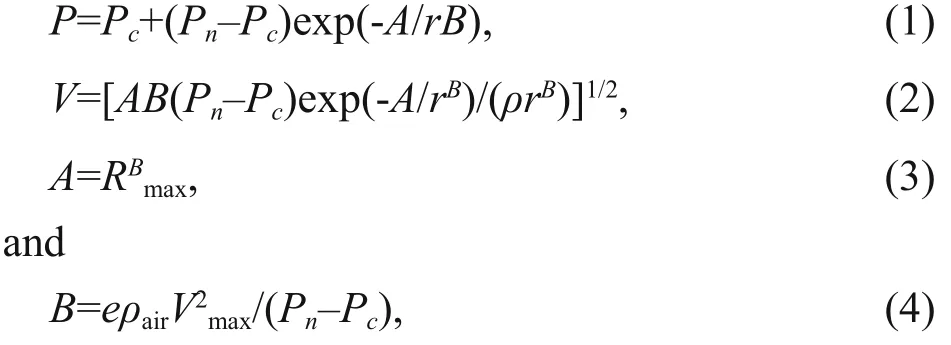
with the translation speed included to describe the asymmetric wind fi eld as

Here, P, Pcand Pnare the atmospheric pressure at radius r, typhoon central pressure and ambient pressure, respectively, V is the wind velocity at radius r,andare the wind vectors in the asymmetric typhoon model and in the Holland model, respectively,is the translation speed,andare the maximum wind velocity and its radius, respectively,AandBare scaling parameters,eis the base of natural logarithms ,ρairis the air density, andβis the angle from the direction which the hurricane moves. In Eqs.1-5,Pc,Pn,Vmax,Rmax,andβare downloaded from the website of the Wenzhou Typhoon (http://www.wztf121.com/), whileρairandeare assumed constant at 1.15 and 2.72, respectively.
In the outer region of typhoons, the wind fi elds of typhoon models usually decay too rapidly (Chen,1994). To characterize the peripheral wind fi eld more accurately, we superimposed the asymmetric wind fi eld over NCEP-CFSR wind data as (Wen et al.,2008).
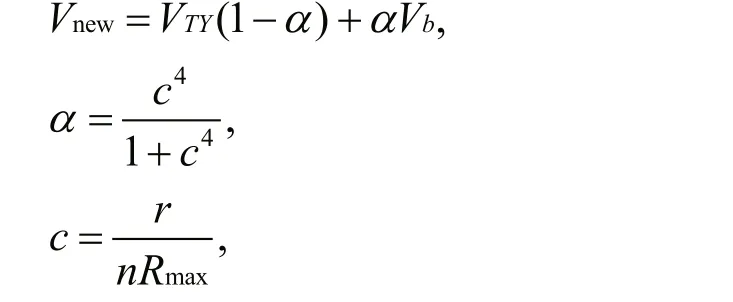
whereαis the weight coeffcient,cis a parameter reflecting the range of the typhoon, andnis an empirical coeffcient equal to 9.
2.3 Description of the experiments
As showed in Fig.1, two groups of experiments were carried out to simulate the tropical storm events of Typhoons Nuri (2008) and Hagupit (2008), which are typical types of southeast-northwest typhoons invading the SCS from the Western Pacific. All the experiments were spun-up for two days before the typhoon reached the domain, corresponding to August 18th and September 16, 2008, respectively. During landfall, Typhoon Nuri was moving at 15 km/h with a peak wind speed of 33 m/s, while Typhoon Hagupit was moving at 25 km/h, with a peak wind speed of 50 m/s, respectively.
GROUP1: A group of experiments to simulate the storm surge during Typhoon Nuri, including a nocoupling (Nocpl) experiment, and coupling experiments with the vortex-force and radiation-stress schemes.
GROUP2: As for GROUP1, but simulations of Typhoon Hagupit.
All experiments were run with one-way and twoway coupling schemes. The coupling experiments included the vortex-force (VF+BH+TKE+WBST+WSST+WCAP+WBRK) and radiation-stress(RS+TKE+WBST+WSST) schemes, with results compared with the sea-level data recorded by the tidal stations of the Hong Kong Observatory. The adjustments of free surface elevations and currents in the ROMS model affecting the wave processes in SWAN were also assessed in two-way coupling experiments.
3 MODEL RESULT
Here we compare and evaluate the results of different schemes, with the intent to describe the storm surge and its response to wave effects during the typhoon crossing of the SCS. To illustrate the wave-induce set-up (and set-down) more effectively,the water elevation attributable to tides was subtracted from the total water elevation below.
3.1 Comparisons with observational data
Figure 2 describes the important simulated processes of storm surge of Typhoon Hagupit (which is similar to Typhoon Nuri, but not shown here),including the stages of storm landfall, both before and after. During Typhoon Hagupit, the storm surge reached a peak elevation of 3 m to the right-hand side of the storm center, with the reduction in water elevation down to -2.5 m on the left-hand side for the Nocpl experiments.
Table 1a and b lists the maximum storm surges during Typhoons Hagupit and Nuri, respectively,where the intensity of storm surge simulated in the coupled experiments is found to be stronger than for the Nocpl experiments, while matching better with the observations. The Nocpl, radiation-stress and vortex-force coupling experiments have margins of error of up to 33.3%, 22.9% (22.9%), and 12.5%(14.6%), respectively, with mean errors of 21.3%,13.6% (14.4%) and 6.5% (6.7%) with respect to the observations. The differences in storm surge between one-way and two-way coupling simulations are much smaller than the differences among the three schemes(i.e., between Nocpl, radiation stress and vortex force). Both coupling schemes improve the accuracy of the storm-surge simulation considerably. As the vortex-force scheme seems to be more suitable for the northern SCS, all coupled experiments compared with the Nocpl experiments below are the vortexforce experiments, unless specified otherwise.
3.2 Simulation results and discussion
Since surface waves are more sensitive to winds than oceanic circulation. The wave fi eld simulated by the wave module (SWAN model) also responds more rapidly to the typhoon (as shown in Fig.3) from about the 30th to the 50th modeling hour, during which thesignificant wave height reached over 2 m. Meanwhile,wave-induced set-up was considerable and reduced together with the height of the surface waves. On the contrary, to the left-hand side of Typhoon Hagupit,the greatest decrease in water level of storm surge had little difference between the Nocpl and radiationstress experiments (Figs.4 and 7). The vortex-force experiments simulated a stronger storm surge during both times ofincreasing and decreasing water levels than both the Nocpl and radiation-stress experiments for both one-way and two-way coupling. As shown in Figs.5 and 6, the maximum values of storm surge
simulated by the radiation-stress experiment were almost the same as for the Nocpl experiment, and the inf l uence of waves on the storm surge diminished rapidly during the landfall of Typhoon Nuri, while storm surge simulated in the vortex-force experiment became stronger.

Table 1 a Comparison of maximum storm surge according to tidal stations released by the Hong Kong Observatory with the results of simulations during Typhoon Hagupit

Table 1 b Comparison of the maximum storm surge of tidal stations released by the Hong Kong Observatory with the results of simulations during Typhoon Nuri
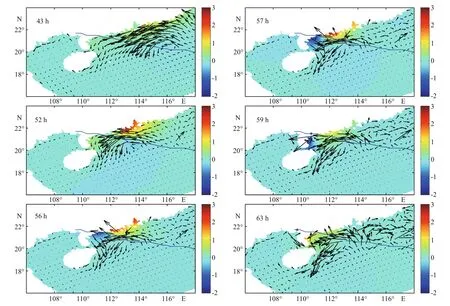
Fig.2 Storm surge of Typhoon Hagupit as simulated in the Nocpl experiment, where the blue line indicates the storm track

Fig.3 Evolution of wind speed, wave height and water-surface elevation at the location of maximum storm surge, which increase during the landfall of Typhoon HagupitThe wave heights are from the one-way coupling radiation-stress experiment.

Fig.4 Evolution of wind speed, wave height and water-surface elevation at the location of maximum storm surge, which decreases during the landfall of Typhoon Hagupit
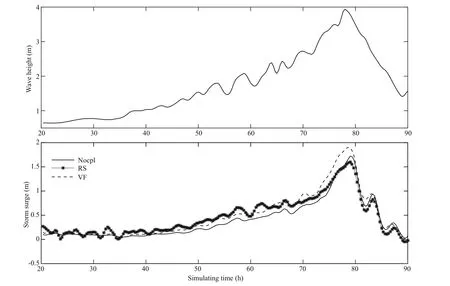
Fig.5 Comparison of time series of wave height and water-surface elevation at the location of the maximum increase in storm surge during the landfall of Typhoon Nuri
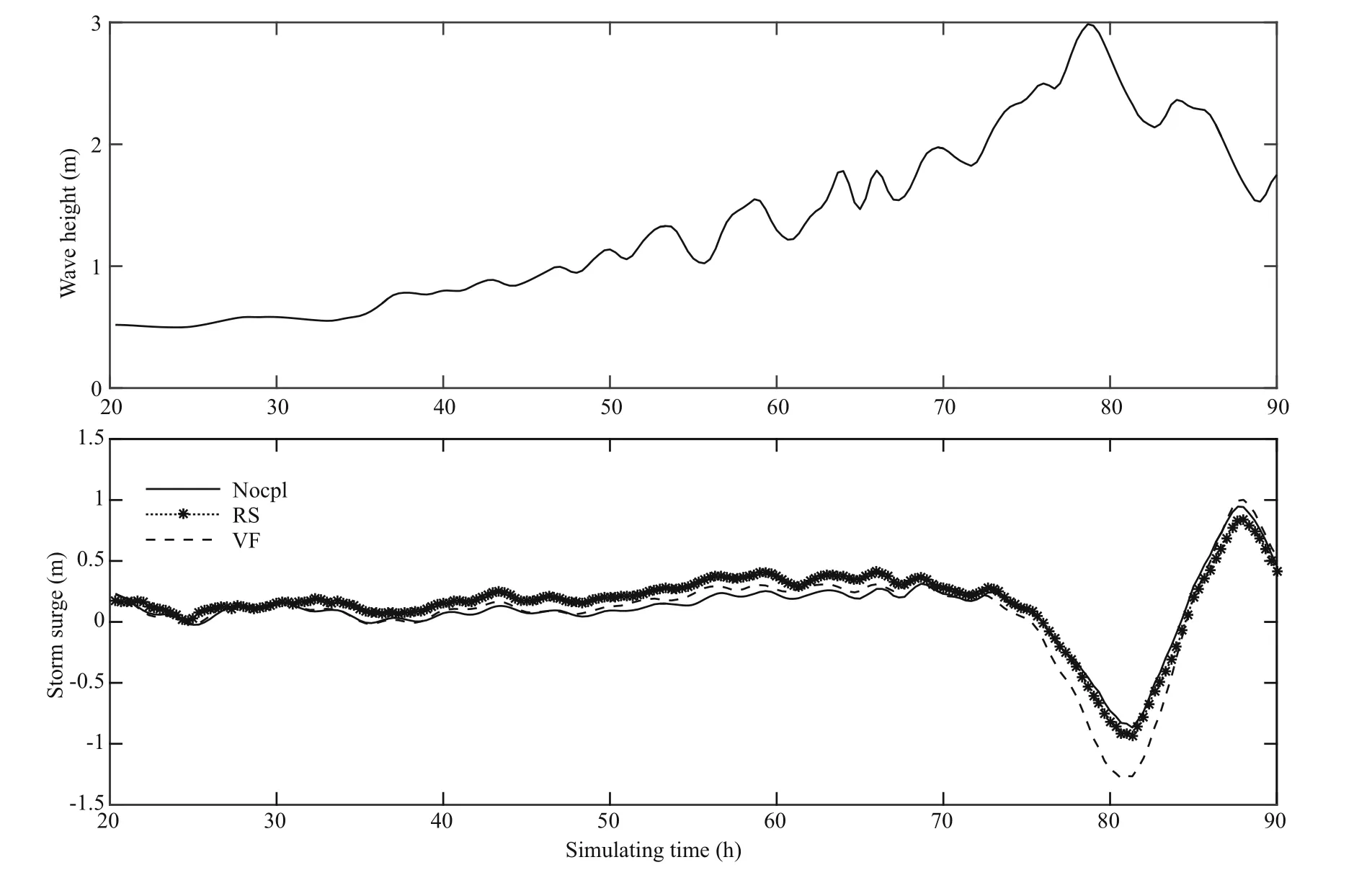
Fig.6 Time series of wave height and water-surface elevation at the location of minimum storm surge during the landfall of Typhoon Nuri
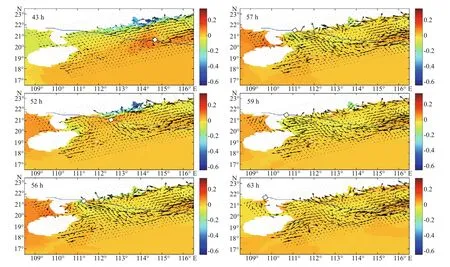
Fig.7 Storm surge and current fi elds during the landfall of Typhoon Hagupit (Nocpl minus radiation-stress experiments),where the blue line indicates the storm track, and white boxes the storm center
In Figs.7 and 8, surface waves affected the coastal sea level when the storm center was located at 20.5°N,which is earlier than the main stage of storm surge,causing more than a 0.4-m rise in sea level on the right-hand side of Typhoon Hagupit, until landfall from 40th to the 55th modeling hour. These adjustments continued to be enhanced in the vortexforce experiment (Fig.8), but gradually weakened in the radiation-stress experiment (Fig.7). After landing(56th modeling hour), the inf l uence of waves on storm surge weakened rapidly, consistent with the results displayed in Fig.3.
In the 60th modeling hour (Fig.9) of the Typhoon Nuri experiments, wave set-up/set-down was still not evident along the coastal areas, when the storm center was located at 20.5°N and 117°E. However, on the right-hand side of the storm center, there was a significant region of sea-level drop, which was induced by the surrounding shoal area. For the vortexforce experiments (Fig.10), the shallow-water effect in this area was less sensitive. During the landfall of Typhoon Nuri, the wave-current interaction weakened the storm surge in Fig.9, which conf l icts with the results of the vortex-force experiment (Fig.10). In comparison with Fig.7, the intensity variation of the storm surge evident in Fig.9 affected by the wavecurrent interaction was weaker, but the range of the variation was larger. One factor causing these phenomena is the different characteristics of these two typhoons, including a difference in the wind and typhoon speeds between Typhoons Nuri and Hagupit.As a consequence of the complexity of the coastline of the northern SCS, variations in storm surge and current showed different characteristics. For example,from the 56th until the 59th modeling hour (Fig.8),the obvious reduction of water level appeared to the east side of the Leizhou Peninsula. In addition, a similar situation (Fig.10) was evident from the 78th until the 82th modeling hour in the Zhujiang River estuary, but with a smaller range. The results varied greatly, and were even opposing in simulations of different typhoons or schemes. Compared with the radiation-stress schemes (Figs.7, 8, 9, 10), the vortexforce schemes simulated stronger effects of the waves on the current for both storm surge and oceanic circulation, which induced further differences in the strength of the current and storm surge on both sides of the storm center.

Fig.8 Storm surge and current fi elds during the landfall of Typhoon Hagupit (Nocpl minus vortex-force experiments),where the blue line indicates the storm track, and white boxes the storm center
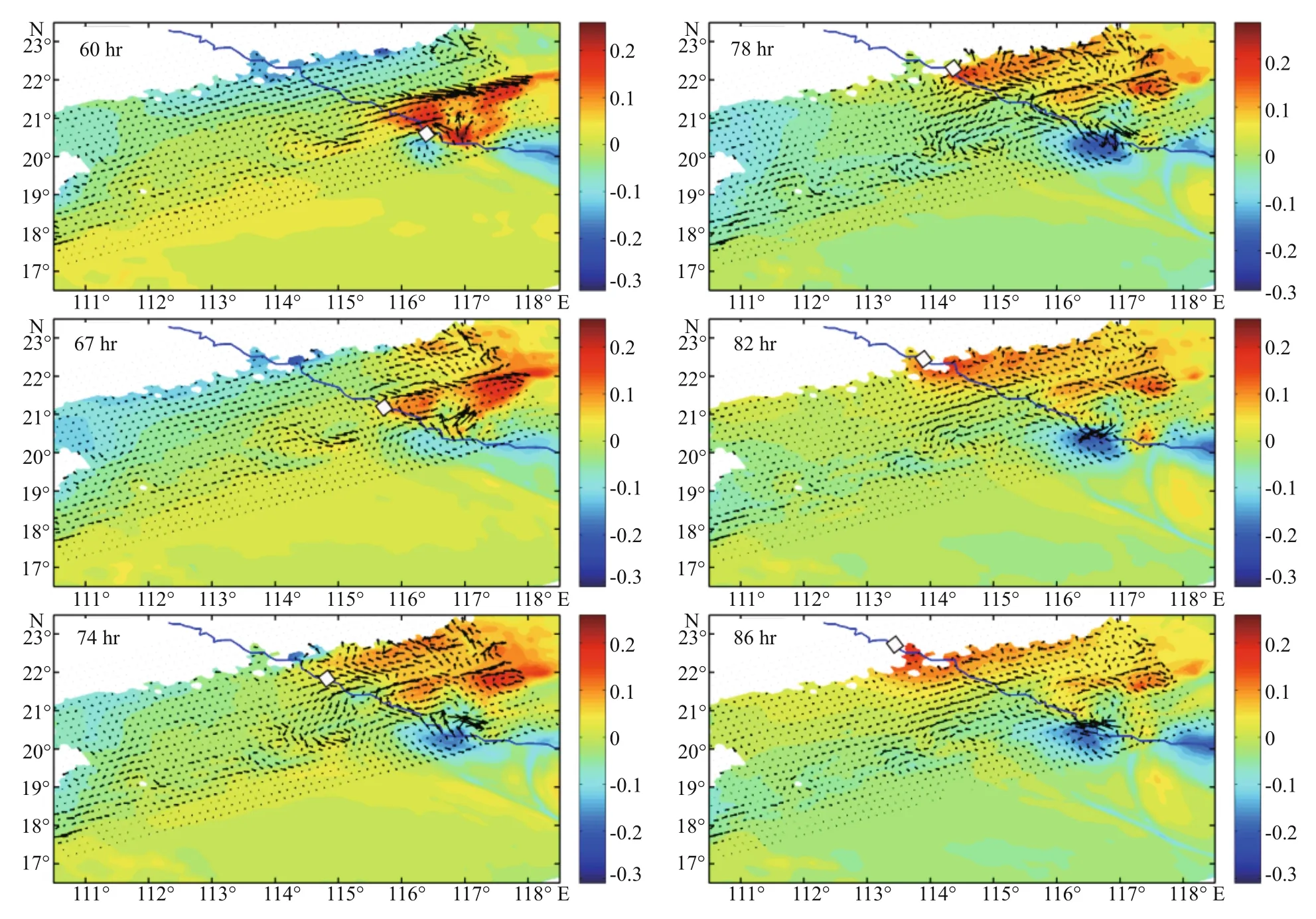
Fig.9 Storm surge and current fi elds during the landfall of Typhoon Nuri (Nocpl minus radiation-stress experiments), where the blue line indicates the storm track, and white boxes the storm center
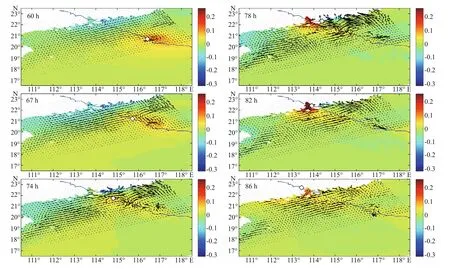
Fig.10 Storm surge and current fi elds during the landfall of Typhoon Nuri (Nocpl minus vortex-force experiments), where the blue line indicates the storm track, and white boxes the storm center
During the landfall of Typhoon Hagupit, the effects of the waves on the current caused the set-up and setdown on the right-hand and left-hand sides of the typhoon track, respectively, strengthened the alongshore current and led to an onshore acceleration(see Figs.8, 11). The non-conservative effects of the waves on the current, mainly the WBRK and WBST schemes, induced shoreward acceleration and weakened the offshore current. The surface-water elevations caused by non-conservative effects of the waves on the current amounted to within 0.2 m, which is much smaller than that caused by conservative effects of the waves on the current (Fig.12). Similar with Typhoon Hagupit (not shown here), the conservative effects of the waves on the current dominated the wave-induced set-up in the Nuri experiments, but the non-conservative effects on the current is still significant.
As shown in Fig.13, we chose three locations outside the surf zone, where the pressure gradient and wave effects on the current (mainly conservative effects) are the dominant terms in the horizontal momentum balance equation, especially in the crossshore direction, where one location is found on the path of Typhoon Hagupit, and the other two on the right- and left-hand sides of the typhoon path,respectively. On the left-hand side of the typhoon track (location a), the wave effects on the current(mainly the vortex force) caused more than 0.5 m in wave set-down, and 1 m/s in offshore current before typhoon landing (56th hour) and during a change in the wind direction. After landing, the offshore current and wave set-down enhanced the strength of the pressure gradient, and the total acceleration began to change its direction and intensified the onshore current. The wave breaking significantly took place on the right-hand side of the typhoon path (location c), where the wave effects on the current induced wave set-up, a stronger onshore velocity and acceleration of wave breaking, and the offshore pressure gradient increased rapidly to balance the sealevel changes. Along the typhoon path (location b),the sea-surface elevation and the wave set-up/setdown were relatively small. The strongest set-down appeared in the 54th experimental hour, and declined quickly with the changes of directions of the wind and current.
4 CONCLUSION

Fig.11 The wave effects on the current force fi eld during the landfall of Typhoon Hagupit (including all conservative and non-conservative wave effects on the current forces), where blue lines indicate the storm track, and green boxes the storm center

Fig.12 Difference in sea-water level and current during the landfall of Typhoon Hagupit (VF_All minus VF_Conserve simulations), where blue lines indicate the storm track, and green boxes the storm center
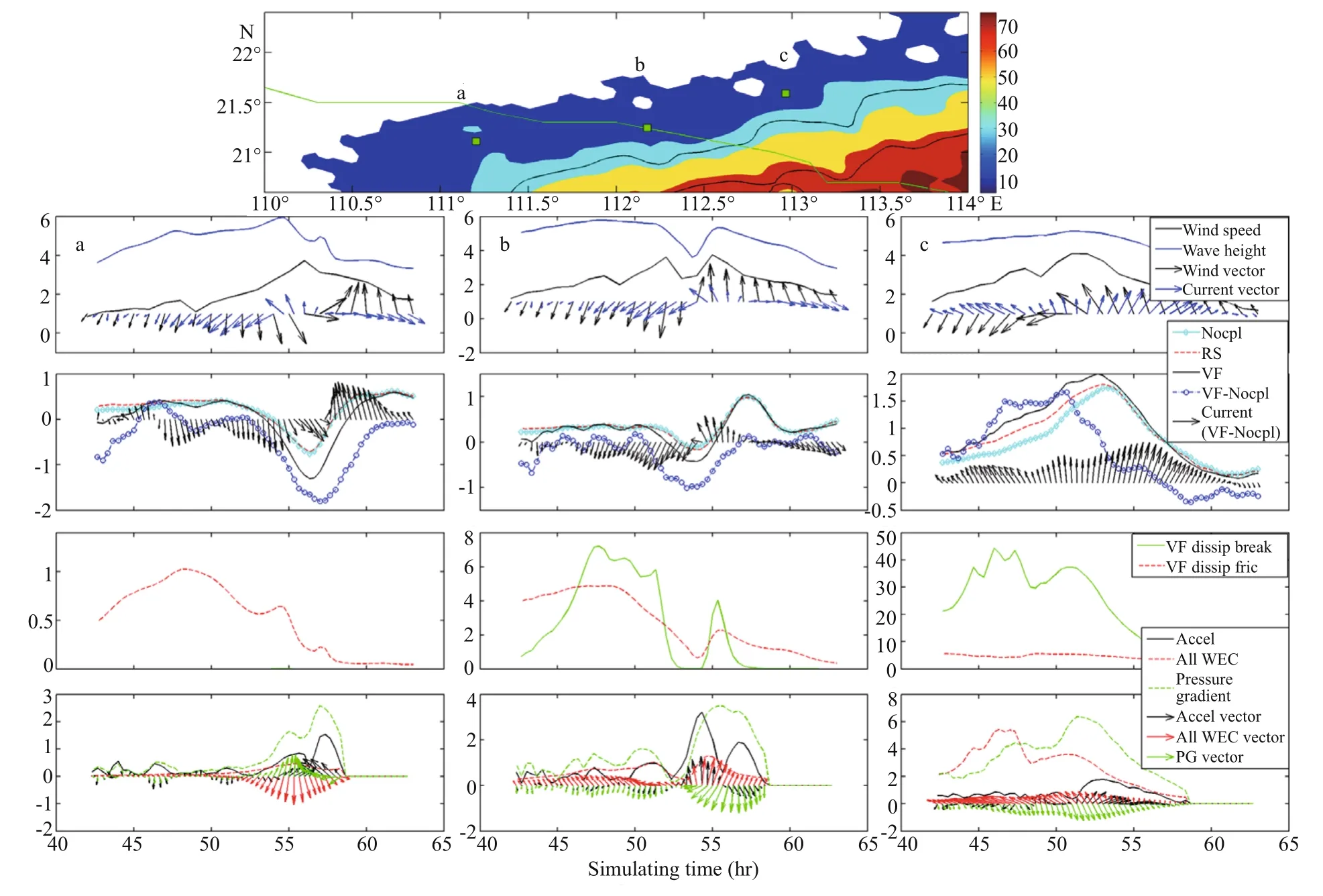
Fig.13 Evolution of (1) wind speed (10-1m/s), wave height (m), and current (VF_All experiment, m/s), (2) water-surface elevation (m), wave-induced set-up/set-down {3×(vortex force-Nocpl)} and the difference of current (vortex force-Nocpl), (3) wave dissipation due to wave breaking and bottom friction (W/m2), (4) horizontal momentum balance terms (m/s2×10-4) during the landfall of Typhoon Hagupit
Wave-ocean coupling systems were used to investigate wave-current interaction on storm surge and circulation along the northern SCS. No-coupling,radiation-stress and vortex-force coupling schemes,whether one-way and two-way, were implemented to evaluate these effects. Based on storm-surge data released by the Hong Kong Observatory, the mean error reduced from 21.25%, (Nocpl) to 13.6%/14.4%(radiation stress one-way/two-way coupling) and 6.5%/6.7% (vortex force one-way/two-way coupling).The results of the vortex-force experiments significantly improved the accuracy of the numerical simulations.
Under extreme weather conditions, wave induced set-up/set-down and the effects of waves on the current cooperating with other acceleration terms changed the local circulation and sea-surface elevation. The processes of coupling simulation were controlled by topography, storm intensity and the speed of the storms. The inf l uence of wave-current interaction on storm surge and current considerably enhanced once the typhoons affected onshore water.The increased water level and reduced current intensity caused by the wave effects on the current are stronger for the vortex-force experiments than for the Nocpl and radiation-stress experiments. However, for the radiation-stress experiments, the variations of wave-induced set-up/set-down are more dependent on the terrain and particular characteristics of the typhoon. We fi nd that the radiation-stress coupling scheme is more suitable for the environment of the northern SCS.
猜你喜欢
杂志排行
Journal of Oceanology and Limnology的其它文章
- Editorial Statement
- The post-larval and juvenile fi sh assemblage in the Sukhothai Floodplain, Thailand*
- Effects of probiotic on microf l oral structure of live feed used in larval breeding of turbotScophthalmus maximus*
- Comparison ofintestinal microbiota and activities of digestive and immune-related enzymes of sea cucumberApostichopus japonicusin two habitats*
- Otolith shape analysis for stock discrimination of twoCollichthysgenus croaker (Pieces: Sciaenidae,) from the northern Chinese coast*
- The impact of spatial autocorrelation on CPUE standardization between two different fi sheries*
